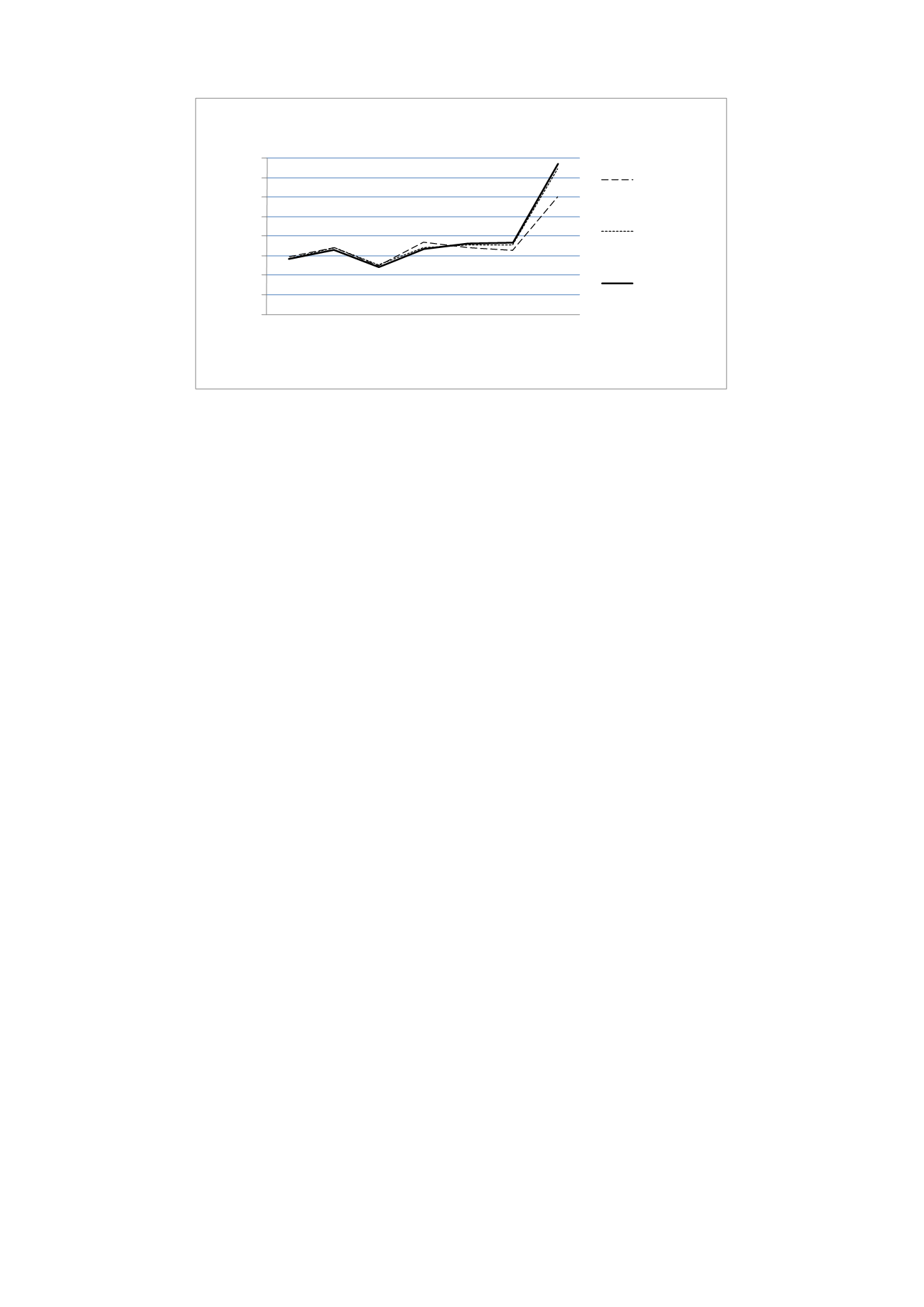
17(23)
0,4
0,6
0,8
1
1,2
1,4
1,6
1,8
2
4
8 12 16 20 24 28
Hazard ratio
Weeks
Figure 5: Effect on hazard ratio, using work-spell
restrictions
Effect (main
analysis)
Effect (12-week
restriction)
Effect (26-week
restriction)
5.5
Model test
If the estimations suffer from unobserved heterogeneity, the results will be
misleading. Not finding the same effects analysing a fictitious reform,
introduced at another date, would strengthen the reliability of the
estimations. Table A1 (appendix) presents the hazard ratio impact
estimates from a placebo reform introduced one year earlier (1 July 2007)
than the actual reform. The analysis thus compares spell durations between
periods initiated in the last week of June 2007 and 2006 with those initiated
in the first week of July in the same years. As before, I control for rich
individual information potentially correlated with health and the demand for
SI benefits.
The results give support to the above conclusion that the introduction of
the rehabilitation chain has in fact increased return to work at the time of
the work ability assessments. None of the week intervals reports significant
impact estimates. The estimate at 25-28 weeks is positive but considerably
smaller than the reform estimate.
The implementation of the rehabilitation chain, where different rules were
applied depending on the first day: reported sick, risks having negatively
affected those in the pre-reform group in 2008. If the new sick-leave
process involved additional work for the administration, the June group
could have received less attention than it otherwise would have received,
affecting its outcome negatively. This would violate the condition requiring
that the comparison-group outcome should be unaffected by the
experiment group treatment.
By comparing sick spells initiated in June 2007 and 2008 with sick spells
initiated earlier in the same years, we test whether it is likely that the June
group was affected by the rules implemented in July 2008 or not.
Figure 6 illustrates the impact of initiating a sick spell in a certain month
(January, April and June) of 2008 compared with initiating it in the same
month of 2007. The estimations are adjusted for the same background
information as in the previous analyses. The exit rate is on average 2-18%
higher for the spells of 2008 at different durations. The impact is larger for
longer sick spells, which suggests that the more extensive sick spells have
become relatively shorter than the not-so-long spells.


